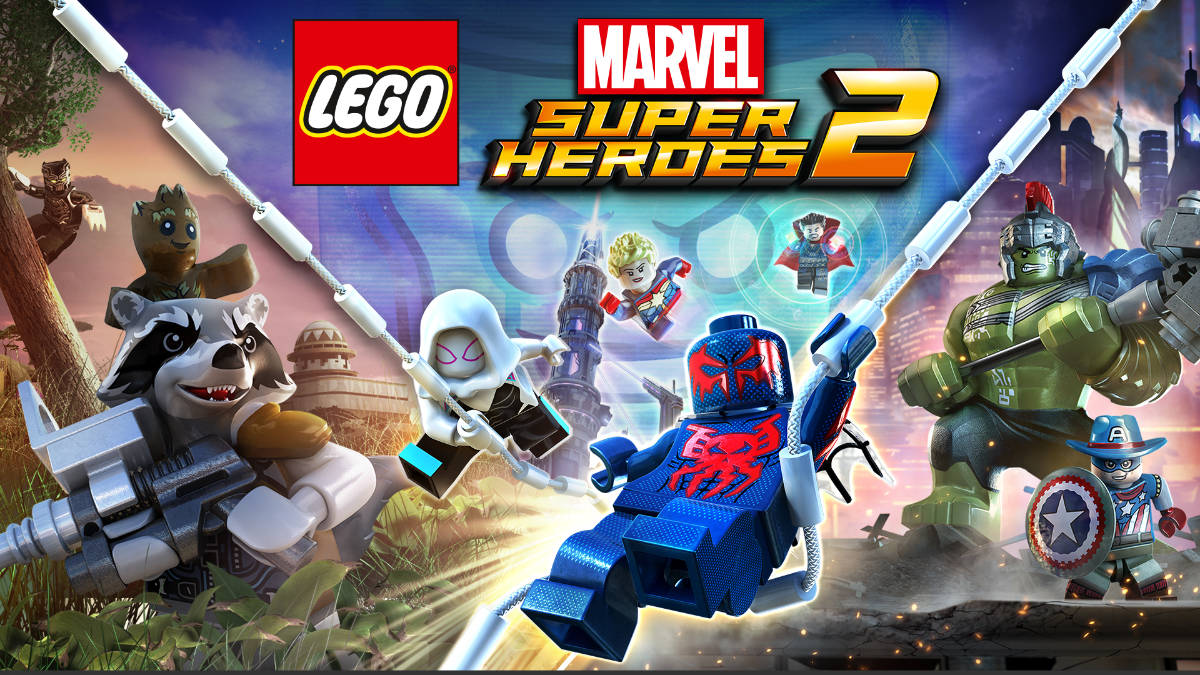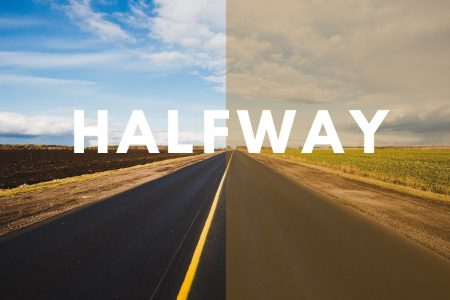Having played Lego Marvel Super Heroes again, I was always going to play the sequel again during the lockdown months. I enjoyed it the first time, and I enjoyed it even more the second time around, because it expands on the scope of the first game and dives deeper into the Marvel comic book universe in such a fantastic way.
As Lego Marvel Superheroes 2 loads up, you see the Milano flying into view as Redbone’s Come and Get Your Love starts playing, each ‘Hey’ in time with the logos for Marvel, Lego and Traveler’s Tales – it brought a smile to my face that stays with you the whole game. (When you complete the game, you get Mr Blue Sky by ELO.) This game came out in 2017, after the success of both Guardians of the Galaxy films, which perhaps explains why they are the centre of the game. We start in a space fight – Kang is attacking Nova Prime – and the Guardians of the Galaxy have to rescue people from the surface as the first level, eventually having to face a Celestial brought from a different time point by Kang; time glitches and things change …
The first thing that is different in this game is the change to more talking bits between the characters during the game levels, in which they tell you what to do to proceed if you don’t know where to start; this involves doing ‘jokey’ banter, something I didn’t take to for the most part. I didn’t mind Agent Coulson in the first game giving you hints, which seemed more natural rather than have the characters talking in explanatory dialogue, even if they try to adhere to the humorous vibe of the GotG films. The powers of the characters: Star-Lord has guns, can fly, and is the only person to wield gravity mines (which used a lot in the game to ensure that he is used regularly); Gamora can fight with swords and is athletic (jumping); Drax is strong (for orange handles); Rocket is versatile, able to use computer terminals, use silver-destroying bombs, fix things, dig, power up electricity panels; Groot can be young (small) or older (larger, thus stronger, plus become a circle for rotation pads).
Meanwhile, on Earth, the Avengers are celebrating a victory in the mansion when they get a call from Nick Fury, which requires Wasp and Captain America to answer it – this needs Iron Man to fix things (an additional skill to the last game, in which Iron Man was the versatile and powerful character to play with at the beginning), and acts as a tour of the mansion to see the hub (Trophy room, Gwenpool’s room for pink bricks, replacing Deadpool in this position from the first game, as she mentions, ‘What about the guy who did it last time?’). Fury has three missions: one in Siberia, another to do with Attuma and the last concerning a prison breakout on the Raft. This requires the Avengers to split up to deal with them: Thor, She-Hulk and Captain America to Siberia to deal with AIM, controlled by the Presence; Iron Man and Captain Marvel fight Attuma, who is working with Roxxon; Ms Marvel, White Tiger and Spider-Man take on the Raft escapees (including the Shocker, Mysterio, the Vulture, Kraven the Hunter and Doctor Octopus).
It is only after this that Kang appears above Manhattan; his ship fires mechanisms into the ground that transport Manhattan into Chronopolis – World of Worlds. It’s an amalgam of different Marvel locations from different times and is wonderfully geeky: Man-Thing’s Swamp, an alternate Medieval England, Wakanda, Nueva York (from the 2099 line of comics), Manhattan Noir, a variant of the Old West, Sakaar, Lemuira, Ancient Egypt, an apocalyptic Asgard, Attilan, Hala, the Hydra Empire, K’un-L’un, Xandar and Knowhere. These surround Kang’s Citadel and are the setting for the world-exploring section of the game outside the levels.
The scale and knowledge involved shows a deep love for Marvel comic book continuity – it’s therefore no surprise to discover that Kurt Busiek is listed as one of the writers of the game (along with Stephen Sharples), a man who has forgotten more than most people know about the Marvel universe and who also wrote a story involving Kang and different Avengers from alternate times and battles across different eras of Marvel history.
All levels start with J Jonah Jameson doing a webcast explaining what is happening in the game, which I found a little tiresome early on, but your mileage will vary depending on your inclination towards the character. Enchantress is in control of a castle in Medieval England, which means that Doctor Strange joins the party – after the film, the character is better known (which is good because you had to wait ages to unlock him in the first game, so frustrating), and he can do much more: magic rope pulling, opening portals, make rune shapes, and time manipulation (which is rather frustrating to actually do in practice). Spider-Man, Ms Marvel and She-Hulk go to Wakanda, which means that Black Panther joins (again, after the film, the character is deservedly more popular) and he has more powers in addition to the claws from the first game: heightened senses to follow clues, the ability to fire energy blasts. It was great to see Ms Marvel as a prominent and oft-used character: she can shrink to go small or to enter hackable panels, stretch through gateway panels, increase size to go big (and strength) – she’s such a wonderful character, so this was a very pleasing development.
Some frustrations in playing the levels: the game has an annoying way of taking certain heroes out for a specific level, for the sake of directing which characters are used for the puzzles/fights, but it is a bit silly and frustrating. The game is much bigger than the first game, so it’s much slower to load, so you can pop out for a cup of tea while you wait. When playing, you die much more easily than when playing the first game, which happens a lot because there are far fewer hearts generated by killing so you can’t replenish your life, plus there is no invincibility brick, so it’s a tad irritating in certain levels. A regular annoyance is the excessively long pause at the end of finishing a level – you think you’ve broken the game and are going to have to do it again.
The depth and variety of characters and locations from the comic books are what truly makes this game special. Man-Thing is introduced because Kang needs to blow up the Nexus of All Realities, which Man-Thing guards, so he can create Chronopolis and connect the worlds, which is a thing of beauty. In the Hydra Empire, you fight Klaw, Zola and Baron Zemo; the Old West has a wealth of Marvel Western characters (although it does have an annoying level on a train jumping through fire hoops where you constantly die or fall off the train). You fight Surtur in Asgard, and we get to play Jane Foster Thor as a character, which is great to see. You fight Elektra Noir and Kingpin in the Manhattan Noir level, the street-level Marvel heroes in the 1930s, where a jazzy soundtrack is always playing. In K’un-L’un, you fight Davos aka Steel Serpent, voiced by the actor from the TV show; in Nueva York, there is Alchemax and Spider-Man 2099, which was a delight to see as a fan of the original Spider-Man 2099 comic books. Although the fight against ‘Carnom’ (a future mix of Carnage and Venom) is tedious AF – you die constantly and can’t kill it from a distance, and you have to do it twice. Sigh.
The goal of the next section is to retrieve five shards of the Nexus of All Realities to put them together and save the day. So the GotG go to Hala for a Nexus fragment – the most annoying: jumping up three step things to get Groot up to a floor to do his rolling thing; it’s almost impossible to do and you will die constantly because the jumps are nearly impossible to judge. The Inhumans take back Attilan from Maximus, who collaborated with the Kree to take the city: Blackbolt (who seems to have acquired powers: he is super-strong, can fly, do telekinesis, but only break glass with his voice, which seems small fry); Medusa (can use hair as rope); Triton with senses and a trident; Crystal (who can fly, and has heat beams and ice beams); Lockjaw (teleporting, digging, senses, telekinesis – he is an extremely handy character, as well as being absolutely adorable). You go to Sakaar and fight Planet Hulk in the gladiator arena; the next level has the best name, when Black Bolt and Medusa storm Hala and fight possessed GotG and the Supreme Intelligence: ‘Hala, is it Kree you’re looking for?’.
An aside: it’s only near the end of the levels, when you try to bring Knowhere to Chronopolis to EMP Kang’s citadel but bring Ego the Living Planet by mistake that we finally get Iron Man as a playable character – was he sidelined due to his prominence in the last game?
The finale sees the attack on Kang’s Citadel, where you fight him and Korvac – when I finished, I had completed 20.9% of the game, and the challenges can begin (open map for area, unfreeze civilians, rescue SHIELD agents, destroy Kang speakers, destroy Kang drones, destroy gold Kang statues, change billboard photos, play mini-games, locate Tiddles, answer trivia questions in different locations, finding wanted poster, finding missing vibranium) and races (the flying controls are better but the driving races are trickier – traffic blocks you more, you have to get the perfect type of vehicle [such as the motor bike races – Ghost Rider’s bike is too heavy and inflexible, Captain America’s bike is too flighty, Black Widow’s bike is OK but a bit light, Gwenpool’s bike actually seemed to work best, particularly for a very tricky race on curved sections of Attilan]) and Gwenpool missions to get all those essential pink bricks to help you finish the game and buy all the characters/vehicles. You get side missions to open characters from Marvel’s rich catalogue, such as all of the members of the Winter Guard (starting with Ursa Major, but also Crimson Dynamo, Darkstar and Red Guardian), but also Clea, Cap-Wolf, Blue Marvel, Hellcow, Hit-Monkey, Hulkling and Wiccan (in a side mission involving Mother, from the Gillen/McKelvie run of Young Avengers), Maestro, Red Wolf, Silk, Spider-Gwen, Miles Morales, Throg (!), as well as Nebula, Yondu and Taserface because of the films. It makes me happy just writing out these names and knowing that people are being made aware of the rich diversity of Marvel’s characters.
There are nice touches in the sequel: if you come to a task that requires a character with specific abilities, when you hit the triangle button to change character, the appropriate superhero is already selected – this speeds things up, but tends to favour the main players instead of allowing others to take centre stage. Setting a destination now uses a beam of light going from point straight up into sky, so you don’t have to follow ghost studs. You don’t have to earn the Times bricks in the Gwenpool missions; they are already there but are very expensive. The card that pops up for the character when choosing from the grid if you click it, giving a nice precis of the character. More, more, more – there are more characters, more challenges, more places to visit, more things to do, all in a wonderfully realised world of Marvel’s locations and characters. Lego Marvel Super Heroes 2 is a very enjoyable game as well as being a love letter to Marvel comic books.





